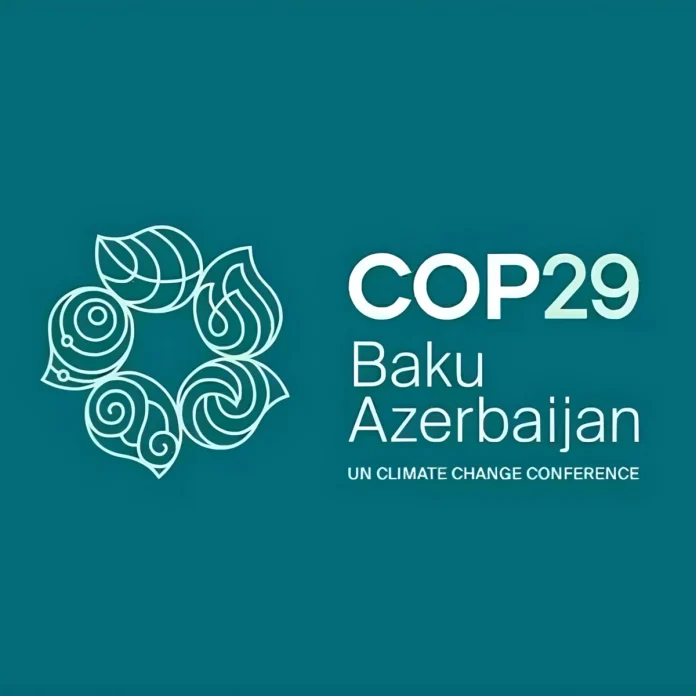As the world approaches COP 29, expectations are high for this pivotal conference to address the growing climate crisis. Set against the backdrop of increasing climate-related disasters such as heatwaves, floods, and droughts, COP 29 will be a critical moment for governments and stakeholders to reassess their climate commitments and chart a path forward. Scheduled to take place from November 11 to 22, 2024, at Baku Stadium in Baku, the capital city of Azerbaijan, this conference could significantly influence global climate policies as nations grapple with the urgent need for more ambitious actions to mitigate and adapt to the changing climate. All eyes will be on world leaders to see if they can move beyond rhetoric and take meaningful steps to tackle the challenges ahead.
A major focus at COP 29 will be on reducing greenhouse gas emissions. The conference is expected to push for stricter mitigation targets with the goal of keeping global warming below 1.5°C. Many nations will need to present stronger plans, especially as current efforts are falling short. The science is clear: emissions need to be drastically reduced, and time is running out. For countries struggling to meet their targets, this conference will likely be a moment of reckoning.
Adaptation will also be a key issue on the agenda. As climate impacts become more severe, many countries, particularly those in the Global South, will seek increased support to build resilience. Nations vulnerable to rising sea levels, extreme weather events, and drought will emphasize the need for financial and technical aid to help them adapt to these changes. The focus will not just be on pledges but on practical, implementable solutions to ensure that these communities can withstand the immediate threats of climate change.
A contentious issue likely to dominate discussions at COP 29 will be the financing of loss and damage. Developing countries have long argued that those most affected by climate change are the least responsible for causing it. At this conference, there will be strong calls for developed nations to provide compensation for the irreversible losses experienced by vulnerable nations. This conversation will test the willingness of wealthier countries to take responsibility for their historical emissions and commit to meaningful financial support.
Climate finance, in general, will be a central topic of debate. In 2009, developed nations promised $100 billion per year in climate finance by 2020, but this target has not been fully met. COP 29 will bring renewed attention to this unfulfilled commitment. Beyond fulfilling past pledges, there will be discussions on how to scale up climate finance to match the growing severity of the crisis. Governments will be pressed to unlock additional funds, particularly for developing countries looking to transition to greener economies and implement adaptation measures.
Read also: The Paris Agreement and its implications for sustainability
The phasing out of fossil fuels, especially coal, will also be a pressing issue. While some countries have made significant strides in transitioning to renewable energy, others remain heavily dependent on coal and other fossil fuels. The challenge at COP 29 will be finding a consensus on how to reduce this dependency while ensuring energy security, particularly for developing nations. There will also be a focus on ensuring that this energy transition is just, protecting workers and communities reliant on fossil fuel industries from economic instability.
Nature-based solutions will play a prominent role in discussions as well. Forests, wetlands, and oceans are essential in absorbing carbon and protecting biodiversity, and COP 29 will likely explore how to scale up these efforts. Governments will look at policies that incentivize reforestation, sustainable land management, and ecosystem restoration. These solutions are often viewed as cost-effective and offering multiple benefits, making them an attractive option for countries seeking to address both climate change and environmental degradation.
Despite the potential for significant progress, COP 29 will face its share of challenges. Geopolitical tensions, particularly around energy security, could complicate negotiations. The influence of fossil fuel industries may also slow down efforts to set ambitious targets. Moreover, the gap between promises and action, which has been a consistent criticism of previous COPs, will remain a concern. There will be growing skepticism if world leaders fail to deliver concrete outcomes.
The COP29 Presidency’s plan is based on two mutually reinforcing parallel pillars. The first pillar, “enhance ambition,” combines key elements to ensure all parties commit to ambitious national plans and transparency. The second pillar, “enable action,” reflects the critical role of finance, a key tool to turn ambition into action and reduce emissions, adapt to climate change, and address loss and damage.
The world will be watching closely, as the stakes at COP 29 are immense. This conference is expected to test the global community’s commitment to tackling climate change, not only in terms of ambitious pledges but also in tangible, enforceable actions. The outcomes of COP 29 will likely influence international climate policy for years to come, and the pressure on decision-makers to act decisively will be greater than ever.





